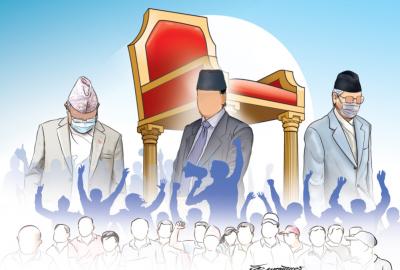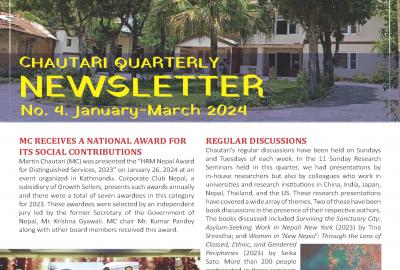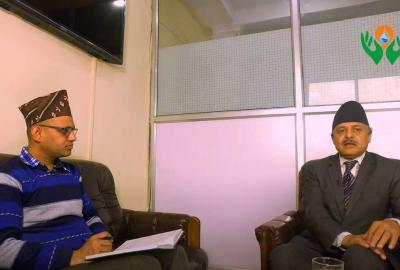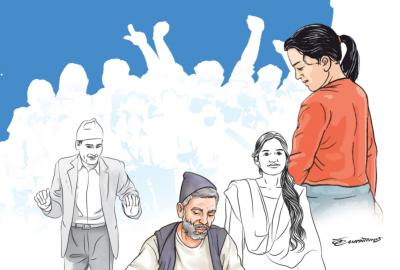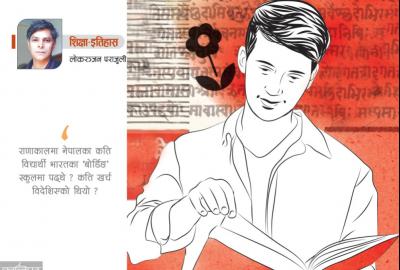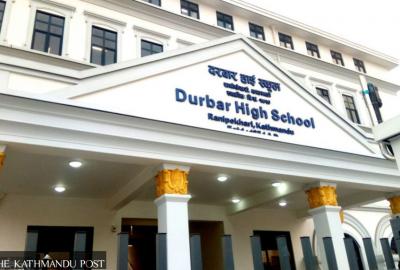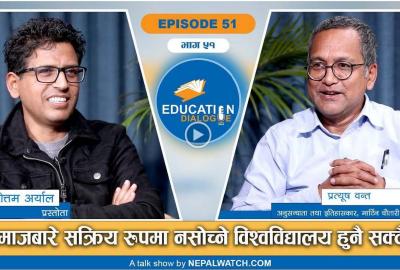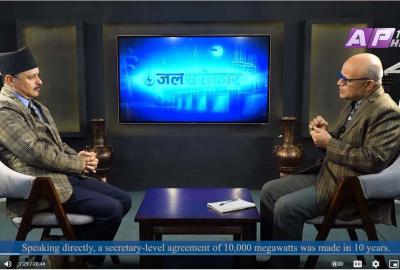Depoliticising VC appointment cannot clear the structural rot that has besieged Nepal’s oldest and biggest university.

Over the course of the last month alone, Prime Minister Pushpa Kamal Dahal has said multiple times that he will end political bhagbanda in the appointment of officeholders in Nepal’s public universities. His statements have come at a time when the top position, namely, the Vice-Chancellor (VC), at Nepal’s biggest university, Tribhuvan University (TU), is vacant. Dahal and his Minister of Education, Science and Technology had known for many months when exactly the tenure of the immediate past VC would be over. They could have launched a process to select the successor in time to make sure that the top post in Nepal’s most important university did not remain unoccupied even for a single day. Having failed to do that, Dahal’s recent statements do not generate much confidence. Moreover, we have heard similar statements from prime ministers in the past. Hence, I will only believe Dahal’s recent proclamations once I see how the VC position in TU gets filled.
But for this analysis, let us assume that the new VC of TU really gets appointed through a process not tainted by ‘bhagbanda’. What will happen on the day after he (“he” because it is very likely that a man will be selected for this position) assumes office? Will the everyday challenges of running TU vanish all of a sudden? Even outsiders with little knowledge know that while the end to ‘bhagbanda’ is a necessary condition for TU’s revitalisation, it is not a sufficient one. To explain what I mean, we will have to revisit some historically generated structural features of TU once again.
An examining university
We all know that TU was established in 1959 as a teaching cum affiliating university. While it has only about five dozen constituent colleges of its own, most of its students are enrolled in more than 1,000 private and community colleges to which it has provided affiliation. The number of its affiliated colleges has grown enormously over the past 35 years as a disguised way to promote private investment in higher education.
The primary implication of being such a university is that TU has more students enrolled in its affiliated colleges than in its own constituent colleges. This means that TU is mostly what some academics call an “examining university.” While it is not responsible for teaching most of its students—that responsibility is performed by faculty of private and community colleges who are not directly employed by TU to do this work—it is responsible for examining all of its students and issuing certificates to those who pass its exams. This means that in its current situation, TU cannot actually improve the quality of the education most of its students are getting since they are enrolled in colleges it doesn't own and are taught by faculty it hasn't recruited.
TU’s massive size is a problem, and every significant report on Nepal’s higher education produced over the past four decades has recognised this as such. While it is obvious that reforming TU would require serious downsizing, those who have led TU in recent years have never honestly acknowledged this point, let alone discuss how it could shed its affiliation-boosted size. What a post-’bhagbanda’ VC will do about this size problem is anyone’s guess.
Centralised university
Even considering just its constituent colleges—some five dozen of them—managing TU is a nightmare. Its colleges are spread all over the country but are centrally managed from its headquarters in Kirtipur in the Kathmandu Valley. It has long been recognised that TU needs massive decentralisation in terms of how it is managed. In the first higher education project launched in the early 1990s, decentralisation was explored via the idea of regional clustering of TU’s colleges with the hope that they will eventually spin off into autonomous universities.
As detailed by colleagues in various publications, this idea did not get anywhere mainly because of internal opposition from TU’s own faculty. The main funder of that reform project, the World Bank, considered this idea a failure and abandoned it in 1999. The idea was then continued under the guise of providing autonomy to TU’s constituent colleges, but even that was a large failure since no meaningful autonomy—in terms of new course creation and faculty hire—could be exercised by individual constituent colleges of TU given its centralised bureaucratic nature.
Sociologist Chaitanya Mishra has recently argued that just because that idea did not work in the 1990s, it does not mean that it cannot be tried again in the 2020s. He has a point. In the national context of a federal republican polity after 2015, some analysts have suggested that TU should be converted into a network of seven TUs, one for each province. However, no one has yet suggested any concrete details about what this means functionally and how this proposed conversion will overcome internal opposition of the kind seen in the late 1990s.
The second major problem of a centralised university is the mechanism through which its faculty members are recruited. The Sewa Ayog (Service Commission) is a body within TU responsible for recruiting and promoting all of its faculty members. Even if its officeholders are not tainted by ‘bhagbanda’, this mechanism of faculty recruitment is completely anachronistic. First, let us take the process of recruitment. The initial general written test is inappropriate for hiring even those faculty members who will be expected to teach undergraduates. It certainly cannot test the specialist knowledge of potential faculty members who will be expected to teach students at the MA, MPhil and PhD levels. The subsequent interviews of the candidates conducted by the Sewa Ayog are all but a charade since the hurriedly assembled panel of interviewers cannot actually do the work of evaluation in the time given to it. This has been known to insiders for a long time and written about by sociologist Mishra recently.
Second, on promotion, we need to acknowledge that there are many faculty members now working for TU who have not been promoted for more than 15 years. Moreover, they have no idea when they might be promoted. The Sewa Ayog does have rules about promotion eligibility, but its operation is completely unpredictable even when some interested party is not padlocking its doors. Again, at the level of the faculty expected to teach higher-level graduate students, its point system of faculty performance evaluation in the name of objectivity is obsolete. Faculty at such a level need to be promoted via detailed written evaluations of their teaching, publications and service by their subject peers, not by some folks assembled to do such evaluations within a few minutes.
What a post-bhagbanda VC will do about the structural problems of TU I have noted here is anyone’s guess. And I have only discussed the tip of the iceberg of the deep structural rot that has besieged Nepal’s oldest and biggest university. The list of other functional challenges is even longer.
Good luck to the next Vice-Chancellor of Tribhuvan University!
Published at : January 4, 2024
https://kathmandupost.com/columns/2024/01/04/what-after-bhagbanda-is-over



